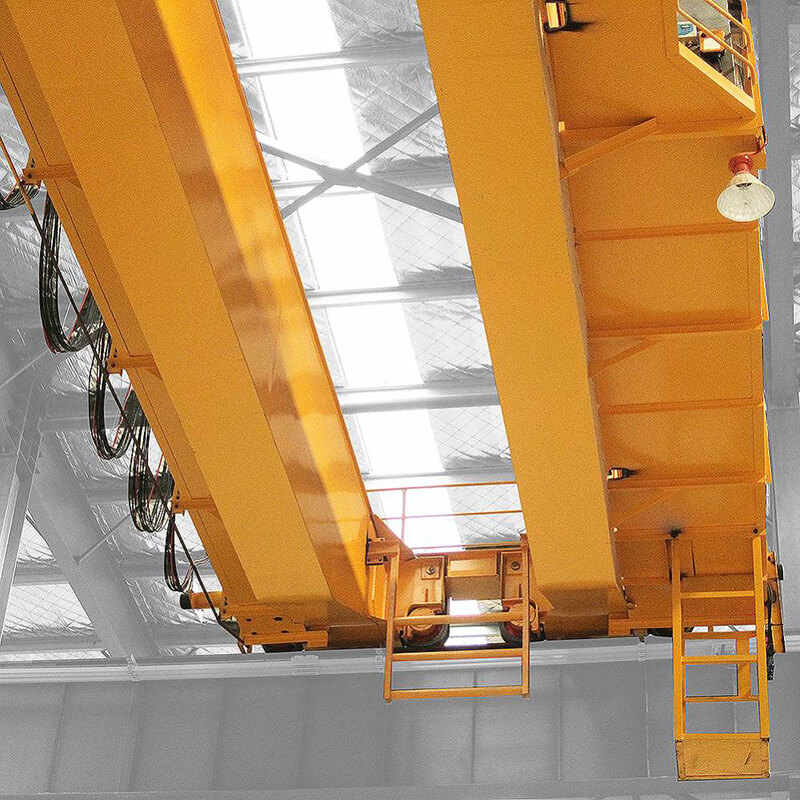Maintenance measures and classification of crane equipment
Crane equipment also needs maintenance during use. The maintenance of the crane should start from six aspects, namely, oil, water, air, and frequent inspection of the fastening parts. The editor will give you a detailed introduction to the maintenance measures and classification of crane equipment.
1. Maintenance measures for crane equipment
1. Foot: oil foot, water foot, air footIf the supply of diesel, gasoline and air is not timely or interrupted, there will be difficulties in starting, poor combustion, reduced power, and the crane engine cannot operate normally. If the oil supply is insufficient or interrupted, the engine will be poorly lubricated, the body will be severely worn, and even tile burning will occur. If the cooling water is insufficient, the temperature of the machine will be too high, the power will be reduced, the wear will increase, and the service life will be reduced.
2. Inspection: Check the fastening parts frequently
Due to the impact of vibration and uneven load during the use of diesel engines and gasoline engines, bolts and nuts are easy to loosen. In addition, the adjustment bolts of all parts must be checked to avoid accidents that damage the body due to loosening.
3. Clean: oil clean, water clean, gas clean and body clean
Diesel and gasoline are the main fuels of crane engines. If the diesel and gasoline are not pure, they will wear out the precision fitting body, increase the fitting clearance, cause oil leakage, dripping, reduce the fuel supply pressure, increase the clearance, and even cause oil passages. Clogging, shaft holding and burning of bushes and other serious faults. If the air contains a lot of dust, it will accelerate the wear of the cylinder liner, piston and piston ring. If the cooling water is not pure, the scale of the cooling system will be blocked, which will hinder the heat dissipation of the crane engine, the lubrication conditions will be poor, and the body will be severely worn. If the surface of the machine body is not clean, the surface will be corroded and the service life will be shortened.
4. Use: the crane engine is used correctly
Before driving, lubricate the lubricated parts such as bearings. After starting, wait until the water temperature reaches 40℃-50℃ before putting it into operation. Long-term overload or low-speed operation is strictly prohibited. Before stopping, remove the load and reduce the speed. After parking in winter, wait until the water temperature drops to 40°C-50°C, except for the engine that has been filled with antifreeze with cooling water. Normally, it is necessary to do the maintenance work of the engine regularly to keep the crane engine running in good condition. Observe and inspect frequently to find faults and eliminate them in time.
5. Grinding: running-in
This is the basis for prolonging the service life. Whether it is a new car or an overhauled engine, it must be run-in according to regulations before it can be put into normal operation.
6. Tune
That is to say, the valve clearance, valve phase, fuel supply advance angle, fuel injection pressure and ignition timing of diesel or gasoline engines should be checked and adjusted in time to ensure that the crane engine is always in good technical condition to save fuel and extend its use. life.
2, the classification of crane equipment
1. According to the nature of lifting: mobile crane, tower crane, mast crane.2. According to the driving mode: one type is centralized drive, that is, one motor drives the long drive shaft to drive the active wheels on both sides; the other type is separate drive, that is, the two active wheels are driven by an electric motor on each side. Medium and small bridge cranes mostly use the "three-in-one" driving method that combines brakes, reducers and motors. Ordinary bridge cranes with large lifting weights often use universal couplings for easy installation and adjustment. .
3. According to the structure: cranes are mainly divided into light and small lifting equipment, bridge type (bridge type, gantry crane), boom type (self-propelled, tower, portal, railway, pontoon, and mast crane) ), cable type.
The above is the maintenance measures and classification of crane equipment introduced by the editor. I hope today's summary can help you all. If you have any questions, please leave a message at the bottom of the website for consultation.




